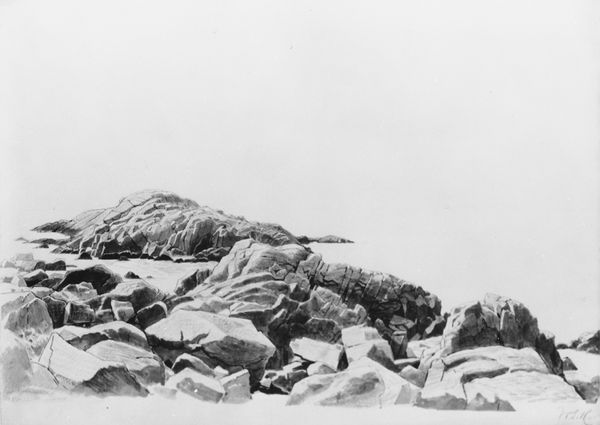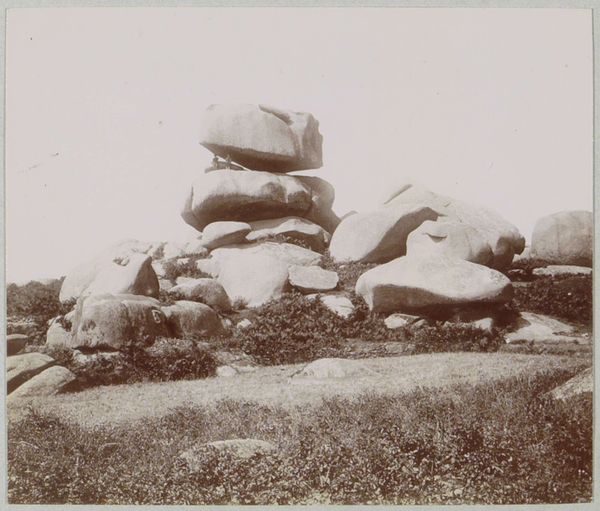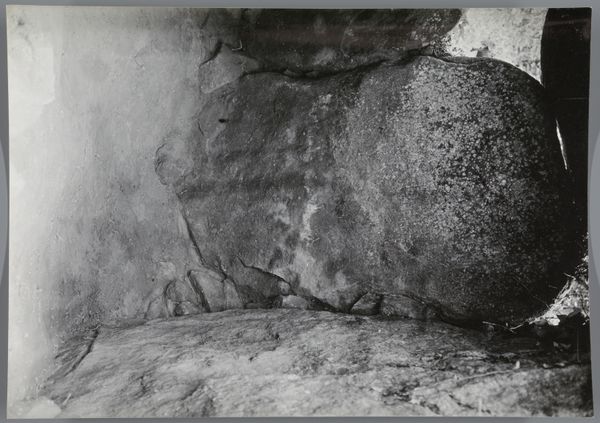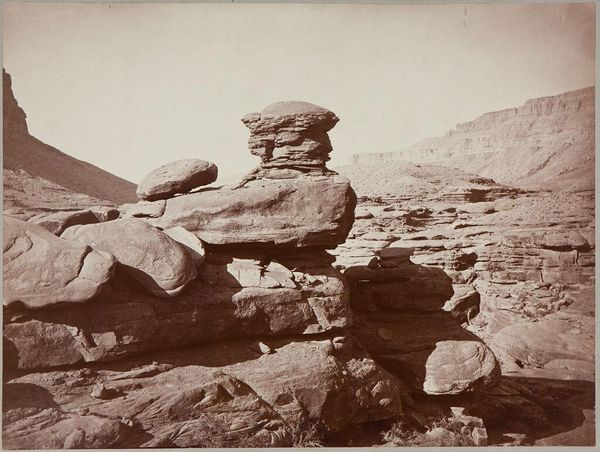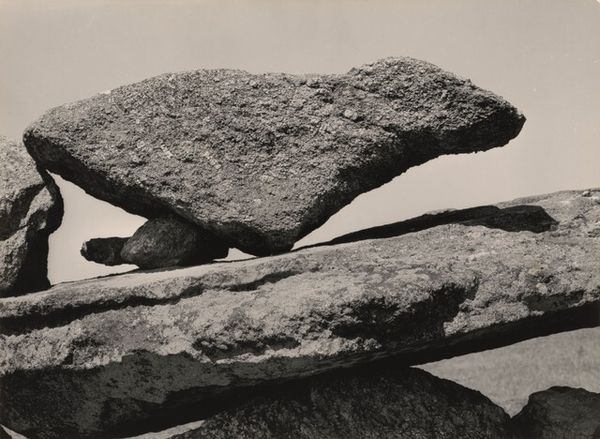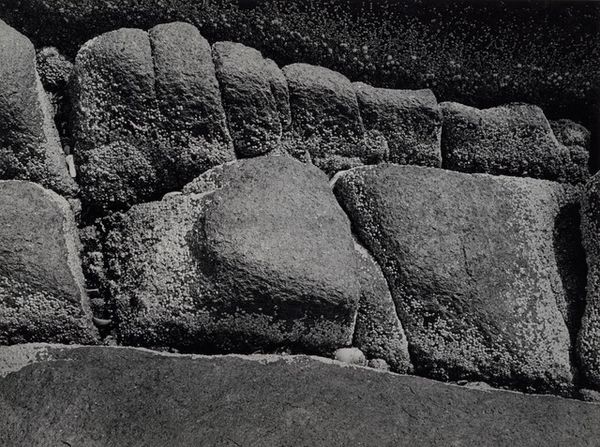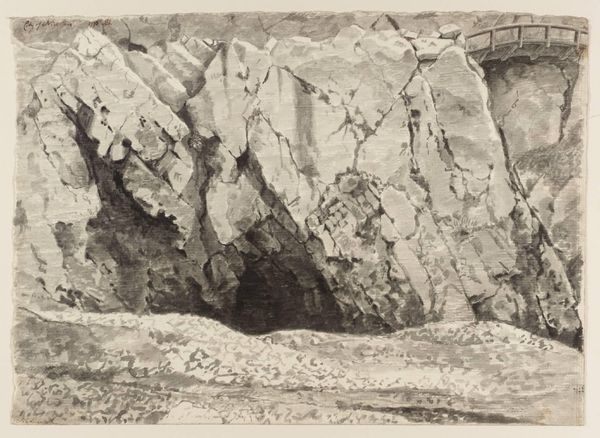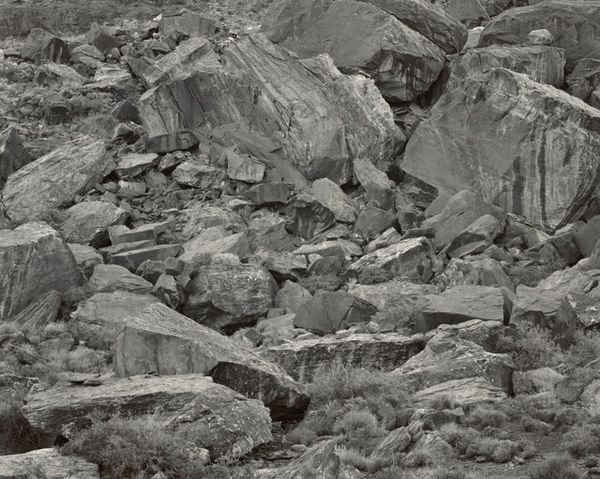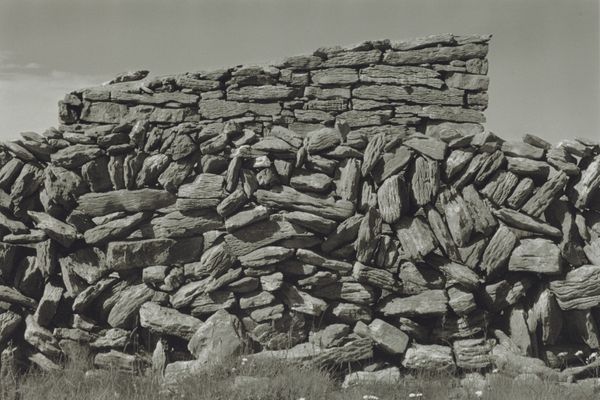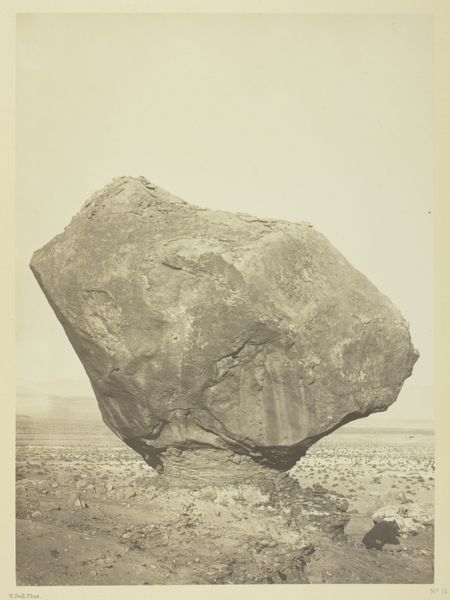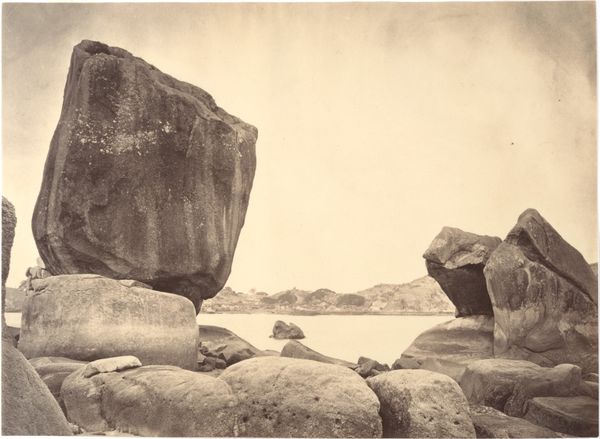
print, photography
# print
#
sculpture
#
landscape
#
charcoal drawing
#
photography
#
history-painting
#
realism
Dimensions: 16 × 22.8 cm (image/paper); 31.5 × 43.7 cm (mount)
Copyright: Public Domain
Curator: Francis Frith’s photograph, "Sinaitic Inscriptions in Wadee El-Mukattab," captured around 1860, offers us a stark glimpse into a landscape marked by ancient human presence. What strikes you about this scene? Editor: The image feels incredibly timeless. These weathered stones, etched with inscriptions, evoke a profound sense of history and enduring communication. There's a weightiness to it, both literal in the mass of the rocks and figurative in the secrets they hold. Curator: Absolutely. This photograph, beyond its aesthetic value, serves as a powerful historical document. Wadi Mukattab, known as the "Valley of Writing," is rich with inscriptions primarily left by early Christians, specifically pilgrims, traders, and soldiers from the 3rd and 4th centuries. Their graffiti tells us of the complexities of early Christianity. Editor: So, the inscriptions aren't just random markings; they represent deliberate acts of communication and claims of presence. Seeing these symbols—some familiar, some enigmatic—connects us to those individuals and their beliefs in a powerful, immediate way. I'm particularly drawn to their integration within the landscape: how nature itself becomes a canvas for expression. Curator: And consider the implications of Frith's choice to photograph this location at this particular historical moment. Britain's imperial project was expanding its influence in the Middle East and Egypt. By documenting these ancient texts, Frith’s photograph plays a role in cataloging, possessing, and narrating that space. We can analyze these photos, thinking about questions of religious freedom and representation of the other in this cultural moment. Editor: It really adds layers to the way we interpret the image. Knowing it was photographed in the mid-19th century contextualizes the photograph, layering its own cultural significance on top of that captured in the stone itself. It speaks to a constant human impulse to mark, remember, and communicate across generations. Curator: Indeed. The photograph, while appearing like a straightforward depiction of a site, speaks volumes about history, power, religion, and the desire to be remembered. Editor: It is such a seemingly still, quiet image, yet it is brimming with conversation across time. I wonder who will read the same rocks a hundred years from now.
Comments
No comments
Be the first to comment and join the conversation on the ultimate creative platform.
